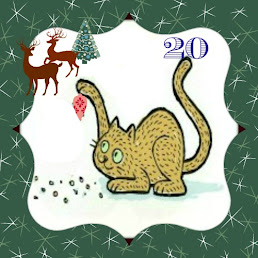I
remember the first time hearing about the British pantomime or panto as it is called informally. Here in Germany, we call a mime "Pantomime", so it was a little confusing to me what this panto was all about.
Panto is usually performed during the time of Christmas and New Year in the UK and other English speaking countries, by professional actors and amateurs alike, in theaters or village halls - even by Princesses Elizabeth and Margaret at Windsor (Aladdin, 1943)!
It is based on children's stories and fairy tales and includes cross-dressing actors, dancing, slapstick, singing, and jokes. It's good versus evil, love, a lot of fun, and a happy ending.
There is The Dame, played by a man. The Principal Boy is the male romantic lead and was traditionally played by a young woman although that has changed in the more recent past. Of course there has to be The Villain. There can be ghosts, mermaids, and many more.
And then there's the audience of course.
Audience participation is an important part of panto. You can sing along, you boo when the villain enters the stage to warn the other actors, just join in on the fun.
Pantomime has its early roots in ancient Rome, the word "pantomimus" being used for a dancer who acted out a story through gestures and actions (which is why we still say "Pantomime" for a mime in German).
In the 15th century the Italian Commedia dell'arte, a form of travelling theater based on a basic plot, with improvised dialogue, began to evolve and eventually gain popularity in Europe. Commedia has a stock of characters, with Harlequin probably being the best-known.
 |
| Nymphenburg Porcelain at The Met |
Going to the theater was one of the favorite pastimes then, and influenced by Commedia, Harlequinades entered the English theater in the 18th century, thanks to a man called John Rich. David Garrick, an actor and theater manager from that time joined the ranks of people who criticized the new form of theater for being not serious enough, but he also wanted to take part in its success. He started bringing pantomime to stage only in the Christmas time.
At the end of the 19th century, panto started changing with the introduction of The Dame in a new form and began to develop into the pantomime of today.
References (with many thanks):
Jennifer Meagher: Commedia dell'arte
Jane Moody: "It's behind you!" - A look into the history of pantomime
Ellen Castelow: Pantomime
National Media Museum UK and The Met for the pictures


.jpg)
How intriguing! While I am aware there were shows with the hero and the villain, and audience participation is encouraged, I was not aware that these shows - at least some of them - were linked with Christmas festivities.
ReplyDeleteMichelle
https://mybijoulifeonline.com
Do you remember the first quote of the week, the one with the lizard footman?
DeleteThat Christmas special is about a panto as well.
Interesting to read the history of this art form. There are those who find mimes creepy, but I've always enjoyed watching them perform. They used to be a common sight as street performers back in the 80's, but I rarely see them anymore.
ReplyDeleteHere we make jokes about them being more annoying or a bit weird, not so much creepy. I have no idea when or why that happened. I even remember a sketch by my favorite Irish comedy trio about it. Is it maybe because our first thought is the "box" or "walking against the wind" as a stereotype?
DeleteI remember when I was a kid, Marcel Marceau was celebrated for his work.
It's just so British to turn this into something rather more eccentric and fun!